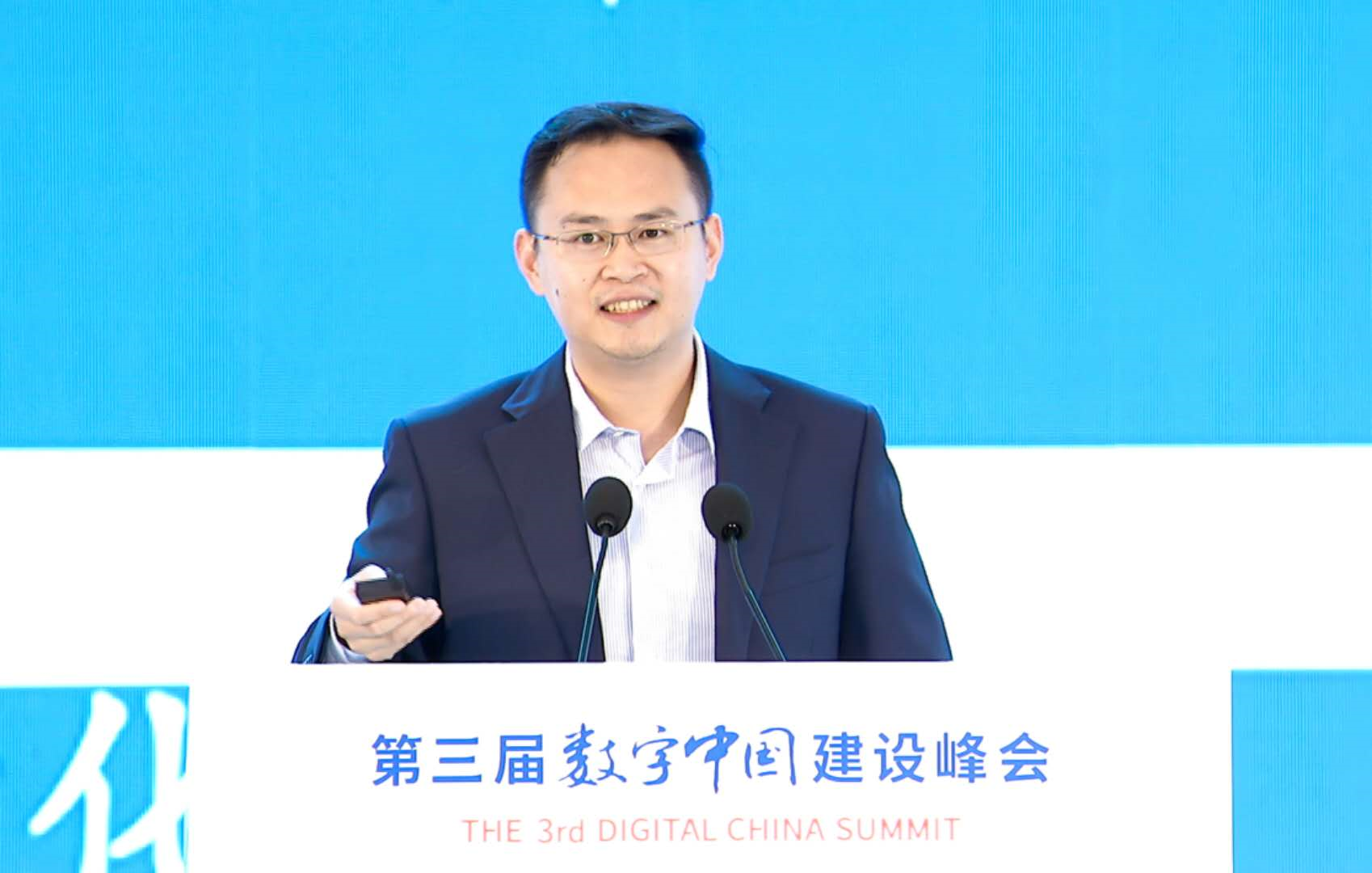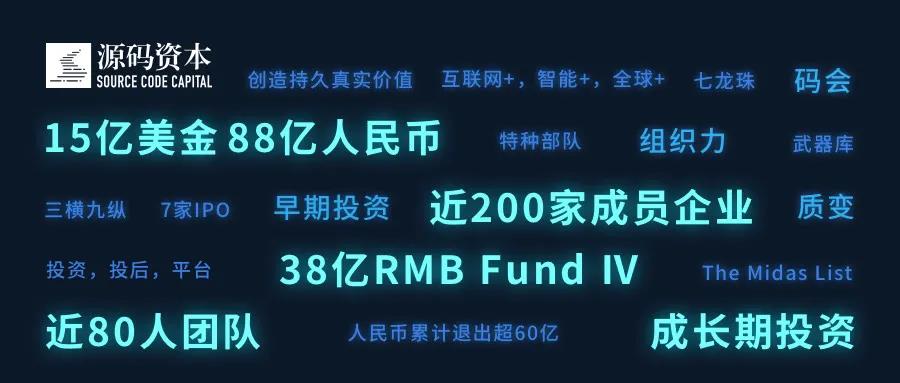On October 13, 2020, Jason Wu, Partner at Source Code Capital, was invited to the “3rd China Digital Summit” and delivered a keynote speech entitled “Realizing the value of robotics in Industrial Internet.”
The theme of this year’s China digital summit was: “Innovation drives digital transformation, intelligence leads high quality development.” It gathered leaders and guests from various domains including several academicians from the CAS (Chinese Academy of Science) and the CAE (Chinese Academy of Engineering), national ministries and commissions members, as well as representatives from state-owned central enterprises and well-known companies. The topics addressed ranged from AI, 5G, Industrial Internet to blockchain, and were accessible through the cloud summit platform offering simultaneously both online and offline presentations. This allowed the creation of a perennial, never-ending exchange platform between the governance and companies where policies cases publication, scientific and technological achievements, industrial innovation can be discussed, resulting in deeper cooperation between entities.
The following is the full transcript of Jason Wu speech:
Dear leaders and colleagues, I am Jason Wu from Source Code Capital. First of all, I would like to thank the organizers for giving us this opportunity, as the only investor present today, to share some opinions from an investment perspective.
At the Digital China Summit last year, Mr. Cao Yi, CEO and Founding Partner of Source Code Capital, shared some details on the context of our investment in the industrial Internet. Today, based on this context, I would like to share with you some new investments we have made in the past 12 months, which is what we see as the “last mile” of the industrial Internet.
The “Last Mile” of the Industrial Internet
The concept of “last mile” is based on the “Three Fundamental Drivers” the investment logic that Source Code Capital has been following since 2016. We can see that the transformation of traditional industries by the “Internet+” has gradually extended from the Consumer Internet to the Industrial Internet. At the same time, “AI+” development is also having an impact in the industrial field. This result in a collision between “Internet+” and “AI+,” which is constantly producing new forms of business.
In the “last mile” of the industrial Internet, the robotic fields in which we are focusing on is actually experiencing the superimposition of three deciding factors: the right time, the right place and the right people.
The right time because the state’s support provides a major development opportunity, and the MIIT (Ministry of Industry and Information Technology) and its newly established Industrial Internet Research Institute are good policy drivers. The pressure of external environment provides external motivations, which may, in the short term, lead to a certain degree of restraint, is proved to be a strong development stimulus in the long run. In addition, in the wake of this post-epidemic era, many questions have arisen. For example, under what circumstances are the industry critical links stable? When facing a virus, people can no longer be a reliable factor, and the use of robots in some key positions has become an inevitable reality.
As for the right place, China is the world’s largest manufacturing center, with a wealth of applications and technology accumulation, which is a major geographical convenience. Take autonomous driving for example. With a large amount of governmental and capital investment, the technological accumulation and its industrial chain are relatively complete, but are still far from large-scale commercial application. However, if we slightly reduce the range of open roads and manned scenarios involved in autonomous driving and allow them in a relatively closed limited space, such as factories and warehouses, and unmanned situations, we can dramatically lower risk factors. Technology spillovers like the one in autonomous driving can create favorable conditions for the development of robots.
Last but not least, the right people. Dr. Zhang Hongjiang, Venture Partner at Source Code Capital, one of the top scholars in the field of artificial intelligence in China, made a very compelling argument. He pointed out that the number of skilled AI personnel in China has surpassed that of other countries in the world; and as you know as well, China possesses the highest number of engineers in the world, and we could go on and on.
Driven by the combination of those three deciding factors, place, time and people, Source Code Capital has seen the market for robotics n China constantly maturing during recent investment practices.
Value Creation of Robots and Robotics
There are two main aspects to the value creation of in the field of robotics.
The first one is data. At the moment, many applications from the Industrial Internet can achieve data connection, but robots equipped with various sensors could become the equivalent of human’s “five senses,” therefore becoming better at collecting various data at a production level. Hence allowing the development of a basis for a large-scale and at an in-depth level of an industrial database.
The second is intelligent manufacturing. Robots can also play the role of “hands and feet”, realizing production and manufacturing functions such as sorting, handling and manufacturing. From an industry 1.0 to 4.0, there is a process starting from mechanization, then electrification, moving towards automation and finally to intelligence. But we observed that many manufacturing industries in China have not yet fully realized Industry 3.0, which is automation. This means that we now have the opportunity in the manufacturing industry to realize both automation and intelligence at the same time, resulting in swift progress in the domain of intelligent manufacturing. Being at the crossroad of automation and intelligence, robots will be an important part of this process.
Investment Expectation: New Robot “Species” and Flexible Manufacturing
As investors, we expect to see longer-term, more transformative innovations. For example, we have invested in many robotic companies that focused on storage solutions, including AGV (Automatic Guided Vehicle), lifting, sorting and palletizing robots. In Industry 3.0 stage, many robots are still independent. Now, as these robots become more intelligent and more interconnected, we feel that unexpected synergies might occur.
Just like with our investment experience in the Consumer space,the 3G era saw the rise of Meituan and Toutiao, although many people didn’t expect this outcome when 3G applications started to make their way into commercial practices. The 4G era was more “classic” as almost everyone knew from the start that video would experience major development with 4G application. Still though, many didn’t foresee that the winner would be the short video format developed by TikTok at it appeared relatively late. We now think that new kinds of robots will be developed, but we do not have yet much details on that. From our past experience with the Consumer Internet, we predict that they may appear in the field of flexible manufacturing.
We can see that the “new consumption” model is obviously characterized by smaller quantity and multiple batches. This change in consumer practice will in turn stimulate the manufacturing side, forcing the industry to adapt to the new above-mentioned characteristics of demand. Therefore, we expect new “species” of robots to arise to better fill in the demands for flexible manufacturing. They will have the following characteristics: first, they will be able to meet flexible requirements induced by smaller quantity and multi-batch production needs; second, they will need to be intelligent and modular, while being able to carry out efficient production and transformation.
As an investment institution focusing on the “new economy”, we are closely following the evolution of those new “species”. We hope to be able to communicate and discuss this subject further with you. Let us, together, look forward to new investment opportunities in the Industrial Internet domain.




